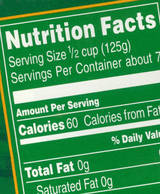Alot of times, we fail at our diets due to the portion of our food. Portions of food have gotten bigger and bigger. Fast food restaurants serve super-sized meals for just a few cents extra, and regular sit-down restaurants serve larger portions than necessary for a healthy balanced meal. These large portions can sneak into your home too, when you grab a typical bag of potato chips and eat the whole thing, or slug down a 20 ounce bottle of soda.
The problem with this portion distortion is the tendency to eat whatever is in front of you, and overeating may lead to gaining unwanted pounds. Even healthy foods contribute too many calories when you eat too much of them.
Let’s talk about portion size
http://www.youtube.com/watch?v=werFcKnr2Gg
Portions Verses Servings
 Although many people use these words interchangeably, portion and serving are not always the same. A portion is any amount of a certain food you choose to put on your plate, while a serving is a recommended amount of food based on health and nutrition guides like the USDA Food Pyramid. This can cause a lot of confusion and consumption of extra calories, especially when you eat energy-dense foods and high calorie snacks.
Although many people use these words interchangeably, portion and serving are not always the same. A portion is any amount of a certain food you choose to put on your plate, while a serving is a recommended amount of food based on health and nutrition guides like the USDA Food Pyramid. This can cause a lot of confusion and consumption of extra calories, especially when you eat energy-dense foods and high calorie snacks.
Let me give you an example. According to USDA Food Pyramid, one serving from the grain and cereal group is about one ounce. One ounce of cooked white rice is only about one half cup, but your portion of rice you put on your plate may be much bigger. So you may think you’re only eating one serving of rice when you’re really eating two or three, and each half cup of rice adds about 100 calories to your meal, so you can see how the calories can add up quickly.
Portion Control Tips
First you need to become familiar with serving sizes for the foods you eat every day. Packaged foods always show the serving size information on the nutrition fact labels, usually in ounces or in common kitchen measurements. Use an inexpensive kitchen scale, measuring cups and measuring spoons to measure your portions of these foods at home until you feel comfortable estimating serving sizes without them.
Foods like meats and fresh produce may not have nutrition fact labels, so you need to know that one serving of meat, poultry or fish is about three ounces, and one serving of a fruit or vegetable is usually one piece of the produce, one cup (chopped or sliced) or 3/4 cup of juice. Once you get comfortable with understanding serving sizes, you can use that information to track your calories accurately in a food diary or on Calorie Count.
Want to cut calories? Here are a few tips for controlling your portion sizes.
If cutting calories leaves you feeling hungry, add extra servings of nutrient-dense vegetables like carrots, green beans and celery. While one-half cup of rice or pasta has about 100 calories, one-half cup of green beans has only 14 calories.
Sources: Shereen Jegtvig, About.com Guide, Updated May 14, 2011
US Centers for Disease Control and Prevention. “How to Avoid Portion Size Pitfalls to Help Manage Your Weight”. Accessed October 19, 2009. ttp://www.cdc.gov/healthyweight/healthy_eating/portion_size.html.
USDA Food Pyramid. Accessed October 19, 2009. http://mypyramid.gov.








